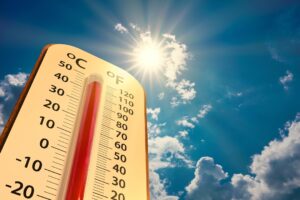
A transit case designed for high temperatures should have certain features.
When transporting sensitive equipment and valuable items, transit cases play a significant role in protecting those items and ensuring they arrive safely. However, ordinary cases may fail to provide the necessary protection in extreme temperature conditions. Exposure to intense solar radiation can warp the case seal, pressurize the interior, crack the exterior finish, and damage sensitive electronics or items inside. Contact Packaging Strategies, Inc. to design a transit case ideal for high temperatures and resistance to solar damage. The following features are essential for cases that may pass through these hot climates or conditions.
Heat-Resistant Materials
The choice of materials is first on the list when designing a transit case for high temperatures. Cases built from high-impact polypropylene, aluminum, or fiberglass composites can offer the best heat resistance. They can also withstand prolonged exposure to heat without warping or deforming, which means your case’s locks and basic shape will not alter.
Insulation
Transit cases must feature efficient insulation to protect the contents from temperature fluctuations. Insulation helps maintain a stable internal temperature and shields against external heat. Foam inserts, insulating liners, and specialized thermal barriers can provide this protective layer that minimizes heat transfer and prevents damage to your valuable equipment.
Temperature Tolerance Range
Ensure your transit case has a wide temperature tolerance range to accommodate its conditions. Many cases are explicitly designed for high-temperature environments, including the upper limits of the expected temperature range. For instance, military equipment is designed to operate at the top 1% temperature range of the hottest locations in the world, which can reach 120+ degrees Fahrenheit.
Also, consider how direct sunlight and proximity to heat sources can raise the temperatures even further. Don’t look solely at the climate when preparing for a high-temperature location.
Ventilation Systems
Fortunately, wind can help lower temperatures. This is why a transit case designed for high temperatures must find ways to utilize airflow and ventilation. Ventilation prevents the buildup of hot air inside the transit case. Integrated ventilation systems such as strategically placed vents or breathable panels help facilitate air circulation and promote cooling, so you have yet another barrier to heat damage to your equipment.
Secure Sealing Mechanisms
To protect your items from external heat and prevent the movement of moisture or dust into your case, your transit cases must be secure sealing mechanisms. Gaskets, O-rings, and other effective sealing systems have proven reliable. When using these features, you create a tight seal that safeguards the contents from environmental factors and maintains a stable internal temperature.
UV Resistance
In addition to the high heat that can build up and melt or warp equipment, exposure to bright sunlight and its UV rays can also do damage. Opt for cases that have UV-resistant properties, such as UV inhibitors in the material or unique coatings. UV resistance can ensure your case’s longevity and ensure its protective qualities remain functional.
DEPEND ON PACKAGING STRATEGIES FOR YOUR CUSTOM PACKAGING NEEDS
Packaging Strategies has assembled a team with over 100 years of experience in design, engineering, development, manufacturing, and sales. We created the Packaging Strategies Design and Technology Center to create and manufacture complete systems integration packages and container solutions of all sizes and materials for our clientele. Many of these clients are federal agencies or in the private sector. No matter what you need to carry, Packaging Strategies is sure to have the right case for the job. You can view our website here, and follow us on Facebook, Twitter, Flickr, and LinkedIn.
This entry was posted on Tuesday, June 6th, 2023 at 11:41 am. You can follow any responses to this entry through the RSS 2.0 feed. You can leave a response, or trackback from your own site.